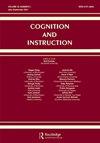创造力的对话:教学的创造性过程动画学生的工作作为一个合作的创意代理
IF 2.3
1区 心理学
Q2 PSYCHOLOGY, EDUCATIONAL
引用次数: 13
摘要
摘要物质人工制品在许多学习环境中扮演着重要的角色。这些文物可以包括草图,操作,3D模型,玩具和游戏,或在创客空间发现的废料。一些理论家认为,物质人工制品,即使它们不会移动或说话,也应该被认为具有自主代理,并与人类参与者平等互动。但很少有实证研究探讨物质人工制品是否或如何归因于人类参与者的代理。本文通过分析设计工作室教室中教授和学生之间的互动来解决这个问题,学生的创作工作是中心焦点。我分析了谈话(包括句法结构和动词方面)与非语言动作(包括眼睛注视、手势、身体方向和身体位置)的密切配合。在第一组发现中,我确定了六种将代理归因于工作的互动机制,包括语言和非语言模式。我证明,通过使用这六种复合的多模式资源,学生的创造性工作是作为一个代理参与者的社会建构。这些发现有助于我们理解人工制品代理在社会实践中的作用。在第二组发现中,我展示了教授们如何将这六种实践纳入话语模式,以帮助学生掌握创造力的对话:这是一个在学生和他们展开的工作之间分配创造力的过程。这些对话为学生塑造了一个以迭代、模糊、探索和涌现为特征的创造性过程。最后,我讨论了这对我们理解教学和学习对创造力的影响。本文章由计算机程序翻译,如有差异,请以英文原文为准。
The Dialogue of Creativity: Teaching the Creative Process by Animating Student Work as a Collaborating Creative Agent
Abstract Material artifacts play an important role in many learning environments. Such artifacts can include sketches, manipulatives, 3D models, toys and games, or the scrap materials found in makerspaces. Some theorists have argued that material artifacts, even though they do not move or talk, should be considered to have autonomous agency and to interact as equals with human participants. But there have been few empirical studies that explore whether or how material artifacts are attributed agency by human participants. This paper contributes to this issue by analyzing interactions between professor and student in design studio classrooms, where the student’s created work is the central focus. I analyze the close coordination of talk—including syntactic constructions and verb aspect—with nonverbal action, including eye gaze, gesture, body orientation, and body position. In the first set of findings, I identify six interactional mechanisms that attribute agency to the work, in both verbal and nonverbal modalities. I demonstrate that through the use of these six laminated multimodal resources, the student’s creative work is socially constructed as an agentive participant. These findings contribute to our understanding of the role of artifact agency in social practices. In the second set of findings, I show how professors enlist these six practices in discursive patterns that scaffold students in mastering the dialogue of creativity: a process that distributes creative agency between the student and their unfolding work. These dialogues model for students a creative process characterized by iteration, ambiguity, exploration, and emergence. I conclude by discussing the implications for our understanding of teaching and learning for creativity.
求助全文
通过发布文献求助,成功后即可免费获取论文全文。
去求助
来源期刊

Cognition and Instruction
Multiple-
CiteScore
7.90
自引率
12.10%
发文量
22
期刊介绍:
Among education journals, Cognition and Instruction"s distinctive niche is rigorous study of foundational issues concerning the mental, socio-cultural, and mediational processes and conditions of learning and intellectual competence. For these purposes, both “cognition” and “instruction” must be interpreted broadly. The journal preferentially attends to the “how” of learning and intellectual practices. A balance of well-reasoned theory and careful and reflective empirical technique is typical.
 求助内容:
求助内容: 应助结果提醒方式:
应助结果提醒方式:


